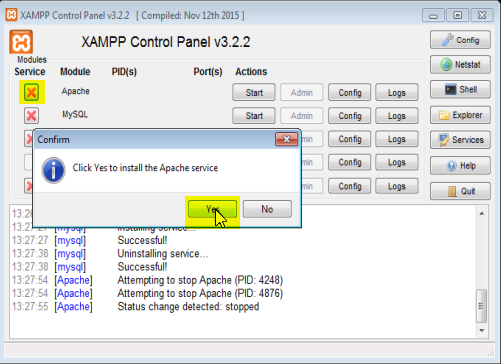
Well, then, install XAMPP like the first time. Finally, rename the folder that XAMPP is installed in, for example, to xampp.OLD/. However, if the new version of MariaDB is a major update with respect to the current one, you should export all your databases.Īfter that, start XAMPP (i.e., the XAMPP Control Panel), stop all running services such as your Apache and MySQL server, then quit XAMPP (i.e., actually close the application, not just hide it to the system tray). A patch and also a minor update does not break any existing functionality, but only fixes bugs and/or introduces new features. If its version doesn’t change at all-very unlikely, though-or if the new version is a patch or minor update of the current one, then you don’t have to do anything special right now. There is one important thing that dictates what to do first: the type of update for MariaDB. And it only takes very few steps to cleanly upgrade XAMPP. Reaching the desired situation is really not that hard at all. What we do not want to have is a bloated xampp folder with lots of stuff that is old, outdated, obsolete and other words starting with “o”.

The goal is to have a clean XAMPP installation in your desired version, with all local hosts still working fine, and all of your current … let’s call it configuration. Of course, you also might have installed one or more additional PHP extensions, and customized or at least completed some config files for things like PHP, MySQL, or even the XAMPP Control Panel. This tutorial, obviously, assumes you already have XAMPP installed, and one or more local hosts set up, which means there are custom files in htdocs/, and MySQL databases and tables created. It might be worth mentioning that I am writing this short tutorial mainly for the future me, although the post should be of good use to anyone with a similar setup.


Instead of installing the new version on top of the current one, I decided to take another route, which I will explain in this very post. I did this, for example, when switching PHP versions, or when I moved from MySQL to MariaDB. From time to time, I-and maybe you, too-want or have to upgrade XAMPP (i.e., install it again, in a newer version).


 0 kommentar(er)
0 kommentar(er)
